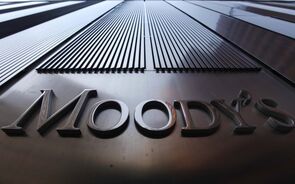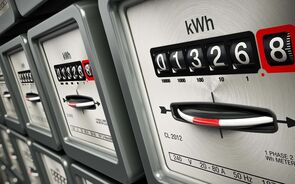John Roque- "Top Seven Plays of the Week"
2 mensagens
|Página 1 de 1
(continuação...)
"7. If you need more evidence for why the market isn't prepared to correct now, here's a look at the Dow Jones Industrial Average and the S&P 500.
I don't want to sound like I'm gushing, because I'm not, but it's hard to find cracks in these two charts. Granted, the S&P 500 has not broken out above 1015 (it's failed there a handful of times since mid-June), but it's above its 50-day moving average (as is the Dow), above its upward-sloping 200-day moving average (as is the Dow) and above an upward-sloping trend line from the March 2003 low.
My balance-sheet approach (technical assets and technical liabilities) continues to show that the asset side of the ledger is loaded. I'll get concerned about the market when this relationship becomes less one-sided (i.e., the S&P gets under its 50-day moving average, the number of new lows picks up, financials weaken, the trend lines here are broken, the Yankees' lead over the Red Sox shrinks, etc.). "
(in www.realmoney.com)
"7. If you need more evidence for why the market isn't prepared to correct now, here's a look at the Dow Jones Industrial Average and the S&P 500.
I don't want to sound like I'm gushing, because I'm not, but it's hard to find cracks in these two charts. Granted, the S&P 500 has not broken out above 1015 (it's failed there a handful of times since mid-June), but it's above its 50-day moving average (as is the Dow), above its upward-sloping 200-day moving average (as is the Dow) and above an upward-sloping trend line from the March 2003 low.
My balance-sheet approach (technical assets and technical liabilities) continues to show that the asset side of the ledger is loaded. I'll get concerned about the market when this relationship becomes less one-sided (i.e., the S&P gets under its 50-day moving average, the number of new lows picks up, financials weaken, the trend lines here are broken, the Yankees' lead over the Red Sox shrinks, etc.). "
(in www.realmoney.com)
- Anexos
-
- 03.gif (32.12 KiB) Visualizado 343 vezes
-
- 03.gif (32.12 KiB) Visualizado 339 vezes
-
- 04.gif (30.45 KiB) Visualizado 340 vezes
John Roque- "Top Seven Plays of the Week"
Deixo aqui sete ideias do analista John Roque sobre o mercado. Fica dividido em dois posts.
Ulisses
"Top Seven Plays of the Week"
By John Roque
Special to RealMoney.com
09/02/2003 02:00 PM EDT
Last week, most people were doing one of three things:
Enjoying a vacation and not really paying attention to the market.
Working, but not really paying attention to the market, because volume levels were anemic, most everyone else was on vacation, and you were busy wondering why you weren't also on vacation.
Getting whipsawed in the market, trying to figure out if the early-morning selloffs or late-afternoon rallies would set the tone for September, the most dreaded month of all.
Hopefully I can clear a few things up for you by focusing on The Top Seven Plays of the Week.
1. Energy stocks are poised to become the new cyclicals. I'm looking for the energy sector to rally just as the cyclical sector has over the past two months. I went through a ton of energy-related charts last week and was lucky enough to share my thoughts with the two or three other people sitting at their desks. Here's what I said:
The integrateds, drillers, equipment and exploration-and-production groups will all get above their respective June 2003 peaks.
At 5.7% of the S&P 500, the energy sector can improve significantly (a la the cyclicals) without a like effect on the S&P 500.
There are some major base patterns within the sector, and my two favorites are Apache (APA:NYSE - commentary - research) and Occidental Petroleum (OXY:NYSE - commentary - research). The weekly charts below are from September 1998 to date with 40-week moving average.
2. The New York Times reported last week that "Japan Is Spending Heavily to Pursue a Weak Yen Policy." The article said, "The Japanese government is defying the logic of the foreign exchange market by keeping the yen from rising sharply in value against the dollar. ... By spending trillions of yen to buy dollars in the foreign exchange market, Japan has limited the yen's rise against the dollar."
Despite its exceedingly generous machinations, I'm looking for the Japanese government to fail in its endeavor to keep the yen from rising vs. the dollar. I'm always concerned about a weakening dollar and ultimately feel that continued dollar weakness will come back to haunt us. However, right here, I don't believe it will have a negative effect on stocks.
There's definitely some support for the dollar/yen at the 115 level, but I think it will work lower in favor of the yen. The head-and-shoulders pattern and a downward-sloping 40-week moving average are conspiring to produce targets of 103.75 and 94.86.
3. Financials, which I (like almost everyone else) want to underweight here, are not deteriorating on an absolute basis. This is a big plus, because as long as this sector does not weaken absolutely, there's very little chance that the market will suffer an important correction. My bellwethers -- Citigroup (C:NYSE - commentary - research) and the Philadelphia Stock Exchange/KBW Bank index, or BKX -- remain above near-term support levels ($42.35 and 850, respectively). For this reason, I think it makes sense to give the market the benefit of the doubt right here.
4. The daily number of new highs on the New York Stock Exchange continues to far outpace the number of new lows. Until the number of new lows moves ahead of the number of new highs (i.e., more net new lows), the market remains well-insulated.
5. Shorts are still not getting paid. Every once in a while, I get the following comment: "I understand the whole 'new high to new low' argument, but I want to sell 'em (translation: short) before they come down." Tongue in cheek, I want to respond, "Yeah, me too." But that's not the way the world works. Unless there's (a) absolute deterioration in financials, (b) a pickup in the number of new lows vs. new highs, or (c) a crystal ball to help us pinpoint which stocks are going to gap down despite an otherwise firm market, I'm not going to concentrate on shorts until I'm confident I can get paid.
6. If you want to see another bond market crash, take a look at what's happened in Japan. On June 13, the 10-year Japanese government bond, or JGB, peaked at 145. Since that time, the bond is down more than 10 points, or more than 7%, in 58 trading days. The corresponding yield is up 282% -- from an infinitesimal 0.438% to a meager 1.673%.
It was necessary for the Ministry of Finance to engineer a JGB crash so the Nikkei could live. In the same way, and because the two are inextricably linked, U.S. bonds have also crashed. I'm dubious about the longer-term beneficial effects of this sort of financial engineering, but I believe it will continue to have the desired effect of higher rates in Japan and in the U.S. The rate on the JGB should work above 2%, the rate on the 30-year T-bond to 6% and the rate on the 10-year T-note to 5.5%."
(in www.realmoney.com)
(continua no post seguinte...)
Ulisses
"Top Seven Plays of the Week"
By John Roque
Special to RealMoney.com
09/02/2003 02:00 PM EDT
Last week, most people were doing one of three things:
Enjoying a vacation and not really paying attention to the market.
Working, but not really paying attention to the market, because volume levels were anemic, most everyone else was on vacation, and you were busy wondering why you weren't also on vacation.
Getting whipsawed in the market, trying to figure out if the early-morning selloffs or late-afternoon rallies would set the tone for September, the most dreaded month of all.
Hopefully I can clear a few things up for you by focusing on The Top Seven Plays of the Week.
1. Energy stocks are poised to become the new cyclicals. I'm looking for the energy sector to rally just as the cyclical sector has over the past two months. I went through a ton of energy-related charts last week and was lucky enough to share my thoughts with the two or three other people sitting at their desks. Here's what I said:
The integrateds, drillers, equipment and exploration-and-production groups will all get above their respective June 2003 peaks.
At 5.7% of the S&P 500, the energy sector can improve significantly (a la the cyclicals) without a like effect on the S&P 500.
There are some major base patterns within the sector, and my two favorites are Apache (APA:NYSE - commentary - research) and Occidental Petroleum (OXY:NYSE - commentary - research). The weekly charts below are from September 1998 to date with 40-week moving average.
2. The New York Times reported last week that "Japan Is Spending Heavily to Pursue a Weak Yen Policy." The article said, "The Japanese government is defying the logic of the foreign exchange market by keeping the yen from rising sharply in value against the dollar. ... By spending trillions of yen to buy dollars in the foreign exchange market, Japan has limited the yen's rise against the dollar."
Despite its exceedingly generous machinations, I'm looking for the Japanese government to fail in its endeavor to keep the yen from rising vs. the dollar. I'm always concerned about a weakening dollar and ultimately feel that continued dollar weakness will come back to haunt us. However, right here, I don't believe it will have a negative effect on stocks.
There's definitely some support for the dollar/yen at the 115 level, but I think it will work lower in favor of the yen. The head-and-shoulders pattern and a downward-sloping 40-week moving average are conspiring to produce targets of 103.75 and 94.86.
3. Financials, which I (like almost everyone else) want to underweight here, are not deteriorating on an absolute basis. This is a big plus, because as long as this sector does not weaken absolutely, there's very little chance that the market will suffer an important correction. My bellwethers -- Citigroup (C:NYSE - commentary - research) and the Philadelphia Stock Exchange/KBW Bank index, or BKX -- remain above near-term support levels ($42.35 and 850, respectively). For this reason, I think it makes sense to give the market the benefit of the doubt right here.
4. The daily number of new highs on the New York Stock Exchange continues to far outpace the number of new lows. Until the number of new lows moves ahead of the number of new highs (i.e., more net new lows), the market remains well-insulated.
5. Shorts are still not getting paid. Every once in a while, I get the following comment: "I understand the whole 'new high to new low' argument, but I want to sell 'em (translation: short) before they come down." Tongue in cheek, I want to respond, "Yeah, me too." But that's not the way the world works. Unless there's (a) absolute deterioration in financials, (b) a pickup in the number of new lows vs. new highs, or (c) a crystal ball to help us pinpoint which stocks are going to gap down despite an otherwise firm market, I'm not going to concentrate on shorts until I'm confident I can get paid.
6. If you want to see another bond market crash, take a look at what's happened in Japan. On June 13, the 10-year Japanese government bond, or JGB, peaked at 145. Since that time, the bond is down more than 10 points, or more than 7%, in 58 trading days. The corresponding yield is up 282% -- from an infinitesimal 0.438% to a meager 1.673%.
It was necessary for the Ministry of Finance to engineer a JGB crash so the Nikkei could live. In the same way, and because the two are inextricably linked, U.S. bonds have also crashed. I'm dubious about the longer-term beneficial effects of this sort of financial engineering, but I believe it will continue to have the desired effect of higher rates in Japan and in the U.S. The rate on the JGB should work above 2%, the rate on the 30-year T-bond to 6% and the rate on the 10-year T-note to 5.5%."
(in www.realmoney.com)
(continua no post seguinte...)
- Anexos
-
- 01.gif (15.15 KiB) Visualizado 361 vezes
-
- 02.gif (20.53 KiB) Visualizado 355 vezes
2 mensagens
|Página 1 de 1
Quem está ligado:
Utilizadores a ver este Fórum: Bing [Bot], Google [Bot], Google Adsense [Bot], m-m, navaldoc, severalmal e 122 visitantes



